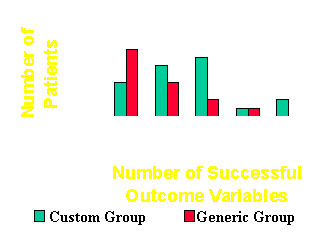| GUIDES
ARTICLESVestibular
rehabilitation and balance retraining Burt Mistiaen
University
of Bruges, BelgiumThe subject of
this presentation is
to propose a protocol for rehabilitation of balance after a seriously
assesment, beging from our case that was a 35
year old female complains of headaches and dizziness beginning two
months ago. She is not sure what started it, except that she was
showing her young daughter how to twirl the baton, she threw it up in
the air, looking up to watch it, and when she looked down again after
catching it she was dizzy to the point of nausea and vomiting. The
symptoms have subsided somewhat, but are still aggravated by looking
upwards. Her least symptomatic position is sitting in an armchair
with her head supported. After this case we made a study 65patients,
age20-89years (mean52), at least 2 month history of symptoms (mean
3.1 yrs). The questions in all these
cases are: What are your
hypotheses as to
the possible origin of this woman’s problems?
What do you know about her condition?
What do you need to know in order to begin
your examination and intervention?
Why
do problems occur? Is
important to know some aspects regards general considerations about
dizziness and pathogeny of this. So exist two great aspects of
mechanisms that perturbe posture control: peripheral systems used for
maintaining upright posture; central postural control(3)...Mechanisms
Possible
causes of dizziness:a) central nervos system disease-tumors, cerebral
concussion/contussion, cranial nerve VIII neuroma, vestibular
neuritis, ottis media, labyrinthine disease, iatrogenic causes
(drugs, surgery) postural hypotension; b) other possible causes
of dizzeness-toxins, migraine, metabolic, hematologic cardiovascular
disease, cervicogenic dysfunction, anxiety disoders, vertebral
insuffciency. Assesment
in dizzeness include assesment of all components of balance and
posture and also physical examination for help differential diagnosis
and establish the corect diagnostic(1).1.Head
eye coordination-vestibulo-ocular reflex: goal is to stabilize image
on retina ( head movements while walking or chewing). Abnormal reflex
suggests vestibular system involvement. 2.
Vestibular provides information on:speed of head movement, direction
of head movement, acceleration of head movement, position of head in
reference to gravity, loss can be unilateral or bilateral(2).xicity
Vestibular
function assesment using electronystamography(ENG) include tests wich
use electrodes to measure eye movements, relative to head
movements(rotating chair, calorics, vestibular autototation test).
3.
Somatosensory: proprioception, pressure, touch, stretch, etc.
Provides information on body part position (in space, in relation to
other body parts).4.In
physical assesment are important specific tests like: vertebral
artery test(fig.1) for facility the diagnostic of nystagmus.
|
|
Fig.
1 Normal
Vestibular Function using ENG(2)
| Fig.
2-vertebral artery test
|
|
|
Propose
of treatment the vestibular and balance impairments
Theoretical
basis for treatment 1.
Treatment
of vestibular
problems-after, we have known the diagnostic, using the results of
assesment we can say if the origin of dizzeness are from central or
peripheric side. If central exercise approach, compensate. If
peripheral we use exercise for reposition. 2.
The first problem is to exclude the habituation factoros, that
involve pathologic response, and to eliminate the provocative
stimulus. 3.
The second problem is to create a new adaptation of neurophysiologic
phenomenons and so to slow decline in afferent neuronal responses.
4.
The third aspect is to development the mechanisms of compensation.
In
our study we begin from a classification of all impairments and the
therapeutic way in each impairment.
|
|

Graphic 1 |
|
Bibliography:
1.Aspinall
W,(1990), Clinical testing for the craniovertebral hypermobility
syndrome, JOSPT 12(2):47-54.
2.Baloh,
(1998) , Repositioning Maneuver (Epley),
Lancet,
Volume 352(9143).December 5,.1841-1846
3.Foster
CA, Baloh RW. (1995), Episodic vertigo. In: Rakel
RE,
ed. Conn's current therapy, 47th edn. 4.Philadelphia: WB Saunders:
837-41.
4.
MageeDJ (2002) OrthopedicPhysicalAssessment, 3rded.
WB Saunders Co, Philadelphia, ISBN 0-7216-6290-0.
|
|
|
|

